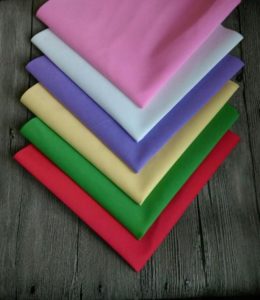The real name of this material is craft foam, which translates as craft foam. Among Russian needlewomen, the name foamiran is much more common, from the name of one of the largest producing countries of this material - foam Iran (“foam from Iran”). However, there is also foamiran produced in China, South Korea and Turkey. These models differ among themselves in color, density, uniformity of coloring and length.
Plastic suede: what is it?

The name “plastic suede” appeared due to its special texture, foamy and slightly rough to the touch. In addition, it has many other names: foam, fom, porous rubber, revelur - all these words denote the same material.
This product is made by foaming from a polymer material such as ethylene vinyl acetate, which looks like sheets of thick paper. As a rule, the thickness of such sheets is approximately one to two millimeters.
Features of plastic suede

The main positive characteristics of foam include:
- lightness and airiness;
- the ability to change its properties depending on temperature: when heated, plastic suede can be given any desired shape, and when cooled, this shape is preserved and fixed by itself until the next heating;
- softness and foamiran is very pleasant to the touch;
- moisture resistance;
- the ability not to fade over time;
- low price;
- amenability to embossing and painting using acrylic and oil paints;
- non-toxic, non-allergic and easy to handle, due to which such material is in demand in children's creativity;
- a wide variety of colors and varieties;
- ability to stretch;
- wear resistance;
- washable;
- environmental Safety;
- Due to the dependence on temperature, foamiran becomes more flexible in the hands, but does not get dirty or sticky, so it is easy and pleasant to work with.
Important! The disadvantages of foam include the ability to rupture when stretched without preheating and the peculiar smell of a new roll after opening the package, which, however, disappears quite quickly.
The areas of application of plastic suede are handicrafts and children's creativity. It is especially in demand in the manufacture of artificial flowers, which look beautiful as decorations, for example, hairpins and elastic bands, brooches and even rings and pendants. In addition, children's puzzles and construction sets are made from it.


 0
0





